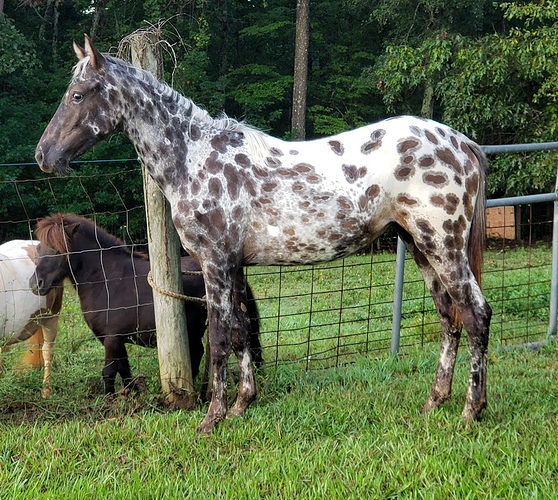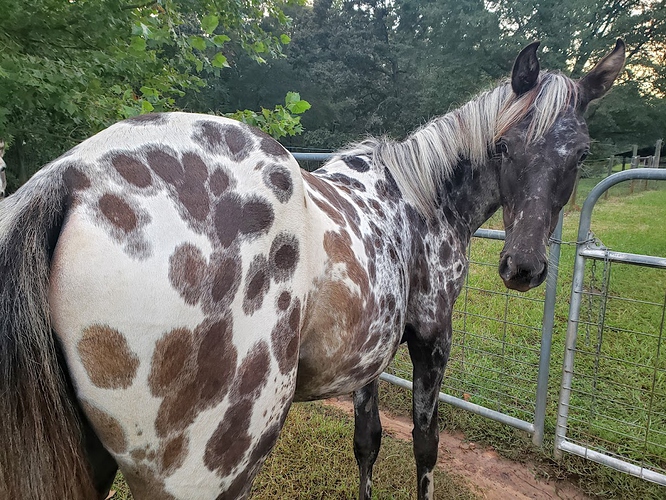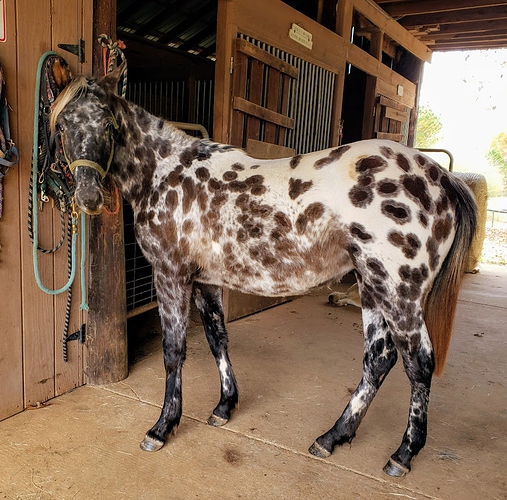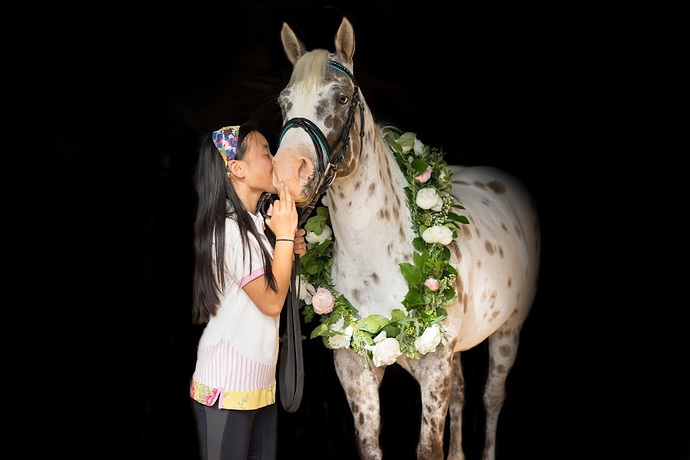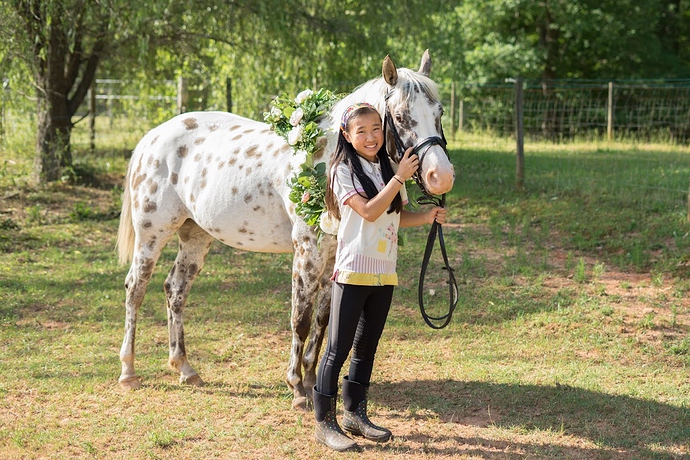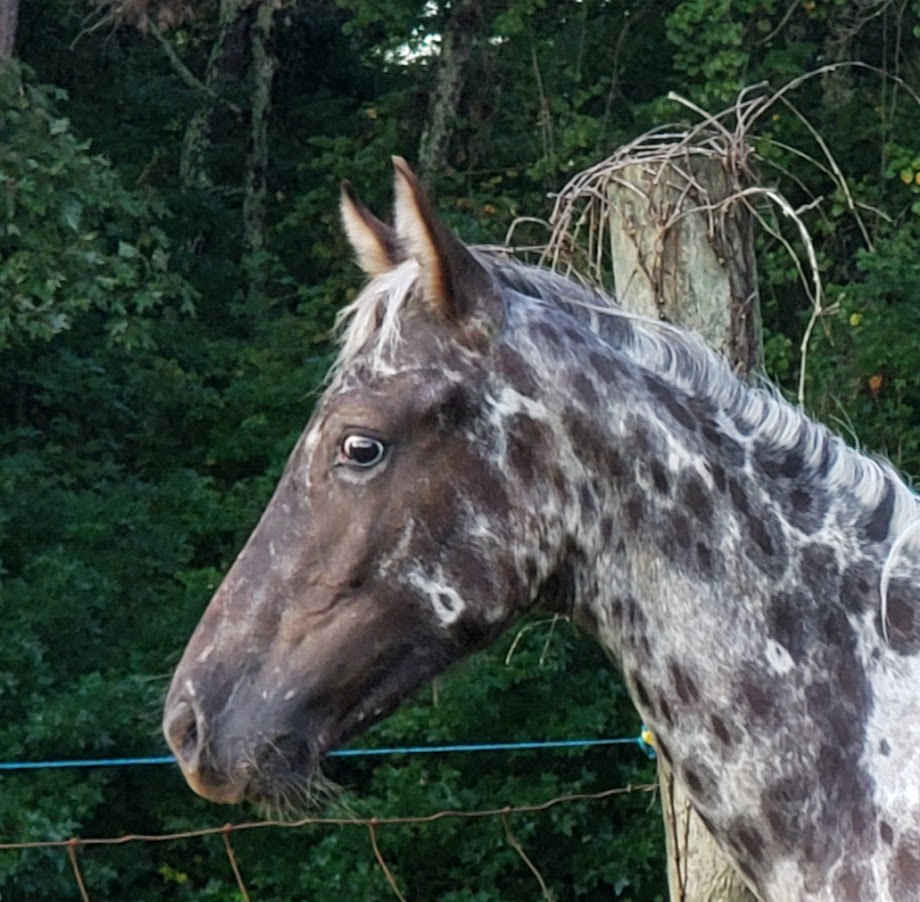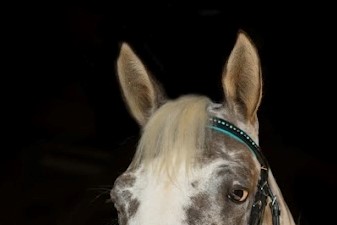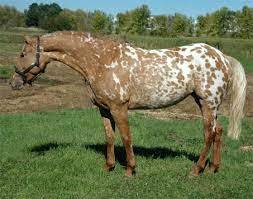I’ll eventually get the filly tested. Her sire is a homozygous black few spot. Dam is a non-characteristic black mare. Filly is registered as black but while she has a black nose and very black legs, her body is chocolatey and never truly black, even when getting in her winter coat in fall when black horses who faded from the summer sun’s glare, darken back up nicely.
I’ve owned a smokey black leopard mare before and she had amber eyes but not the more golden tones in her coat like this filly, and appeared for all intents and purposes black other than that but produced dilute foals when bred to non-dilute stallions.
I’ve also owned a lighter more golden grullo dun leopard mare but whose pattern was different from this filly but also similar. Neither had/have a dorsal stripe due to the leopard pattern.
This filly I would call bay except she doesn’t have any bay face markings. Her ear tufts are rather golden in color making me also think Grullo. Pics for reference. Thoughts?

